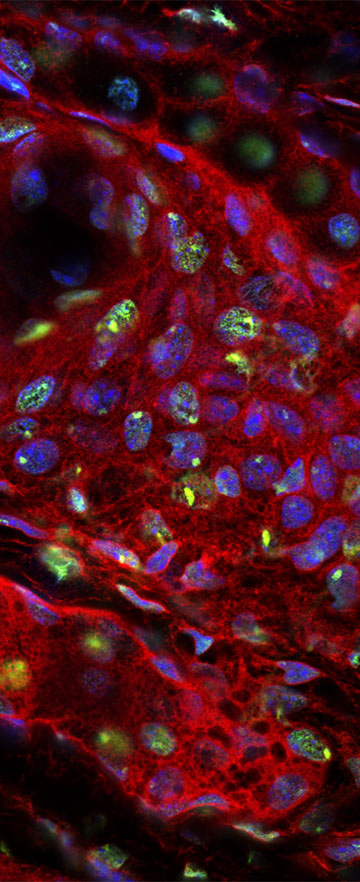Transform the lives of patients by harnessing the body’s regenerative potential through personalized autologous therapy
Company Overview:
At PolarityTE, we are focused on developing regenerative treatments for some of the most complex wounds—where disease burden on patients and families is immense and current therapeutic options are often limited or do not exist.

Our Focus:
Innovative Research
At PolarityTE, our research is designed to deepen our understanding of skin’s complex regenerative cellular biology and use this understanding to develop new therapies for treatment of the most complex wounds, in patients with limited treatment options. We leverage our highly skilled in-house R&D team to rapidly move these strategies and therapies from bench to bedside, with the goal of delivering treatments to the patients that need them the most.
Clinical Development Program
Our lead investigational product in development, SkinTE®, was previously marketed and used in over 1,200 clinical cases, often for patients who suffered from chronic cutaneous ulcers and had no other alternative form of treatment. PolarityTE has an accepted investigational new drug (IND) application with the U.S. Food and Drug Administration (FDA) for the SkinTE® product, and has commenced its first pivotal clinical study under IND in diabetic foot ulcers (DFU) to generate the data that the FDA requires for submission of a biologics license application (BLA). FDA has designated SkinTE® as a Regenerative Medicine Advanced Therapy (RMAT), which is reserved for products intended to treat, modify, reverse, or cure a serious or life-threatening disease or condition, where preliminary clinical evidence indicates that the drug has the potential to address unmet medical needs for such disease or condition.
Addressing Significant Unmet Needs
Our current focus is on complex wounds, which encompasses both acute and chronic wound categories. A 2018 retrospective analysis of Medicare beneficiaries estimated that the prevalence of wounds in the US is around 8.2 million people.¹ Chronic wounds are wounds that fail to progress through the normal healing pathway and are open for more than one month and include DFU, venous leg ulcers (VLU) and pressure injuries—each of which represent a substantial unmet medical need. Similar to chronic wounds, acute wounds present a challenge to the healthcare system accounting for 17.2 million hospital, ambulatory and outpatients visits annually.²
¹Nussbaum SR, Carter MJ, Fife CE, DaVanzo J, Haught R, Nusgart M, Cartwright D. An Economic Evaluation of the Impact, Cost, and Medicare Policy Implications of Chronic Nonhealing Wounds. Value Health. 2018 Jan;21(1):27-32. doi: 10.1016/j.jval.2017.07.007. Epub 2017 Sep 19. PMID: 29304937.
²Sen CK. Human Wound and Its Burden: Updated 2020 Compendium of Estimates. Adv Wound Care (New Rochelle). 2021 May;10(5):281-292. doi: 10.1089/wound.2021.0026. PMID: 33733885; PMCID: PMC8024242.
³DiMaggio, Charles et al. “Traumatic injury in the United States: In-patient epidemiology 2000-2011.” Injury vol. 47,7 (2016): 1393-403. doi:10.1016/j.injury.2016.04.002
